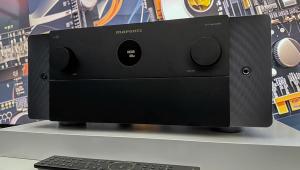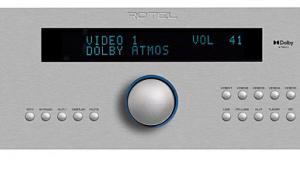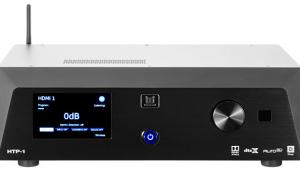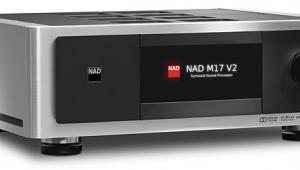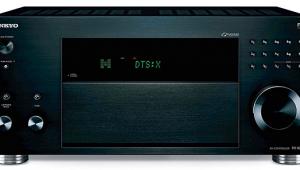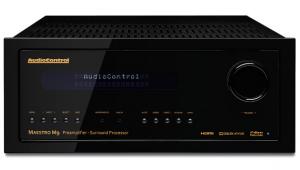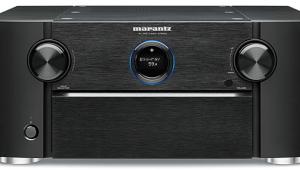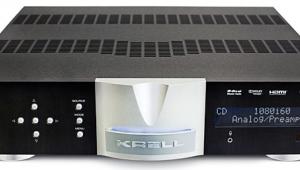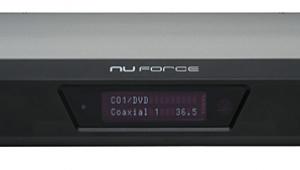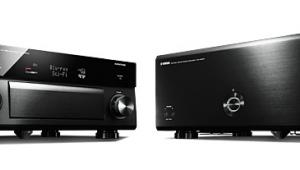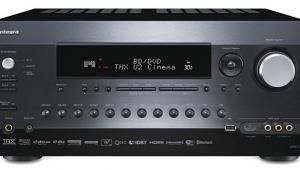Yamaha CX-A5000 Surround Processor and MX-A5000 Amplifier Test Bench
Yamaha CX-A5000 Surround Processor
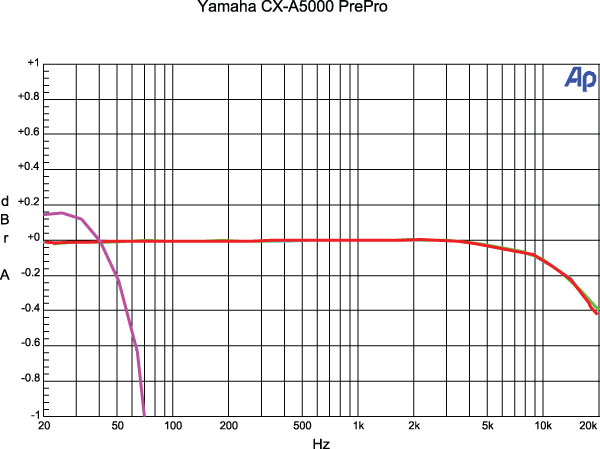
The above chart shows the frequency response at the preamp outputs of the Dolby Digital decoder. Left (aqua): –0.01 dB @ 20 Hz, –0.35 dB @ 20 kHz. Center (green): –0.02 dB @ 20 Hz, –0.40 dB @ 20 kHz. Left surround (red): –0.02 dB @ 20 Hz, –0.36 dB at 20 kHz. LFE (purple): Normalized to the level @ 40 Hz: +0.15 dB @ 20 Hz, upper –3 dB @ 93 Hz, upper –6 dB @ 106 Hz.
Analog frequency response in Pure Direct mode:
–0.04 dB at 10 Hz
–0.01 dB at 20 Hz
–0.35 dB at 20 kHz
–1.96 dB at 50 kHz
Analog frequency response with signal processing:
–1.19 dB at 10 Hz
–0.37 dB at 20 Hz
–0.83 dB at 20 kHz
–23.94 dB at 50 kHz
Response from multichannel input to the output: –0.03 dB @ 10 Hz, –0.00 dB @ 20 Hz, –0.03 dB @ 20 kHz, –0.21 dB @ 50 kHz. Analog THD+N: less than 0.008% at 1 kHz with 100-millivolt input and volume control set to –3.5. Crosstalk with 100-mV input: –93.22 dB left to right, –94.46 dB right to left. Signal-to-noise ratio with “A” weighting: –121.37 dBrA.—MJP
The Yamaha CX-A5000 failed only one of the HD video processing tests, the tough (yet seldom seen in real-world material) 2:2 HD test. With the video processing engaged, the unit fails to pass the full chroma signal, but if the video processing is bypassed, the full chroma signal is present in the passthrough of the video signal.—DV
Yamaha MX-A5000 Amplifier
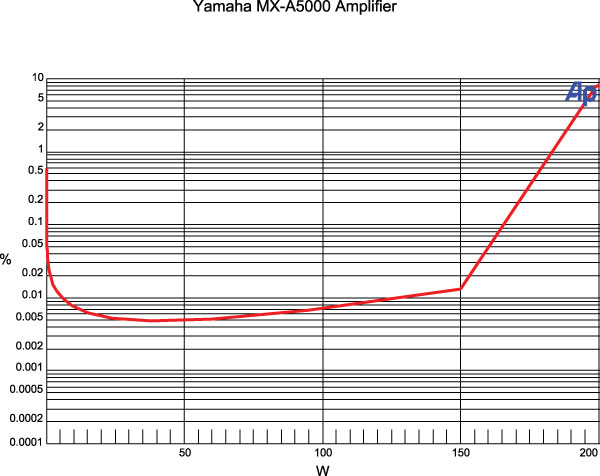
This graph shows the MX-A5000’s left amplifier channel, with two channels driving 8-ohm loads. Measurements for THD+noise, crosstalk, signal-to-noise ratio, and analog/digital frequency response were all within expected performance parameters.

